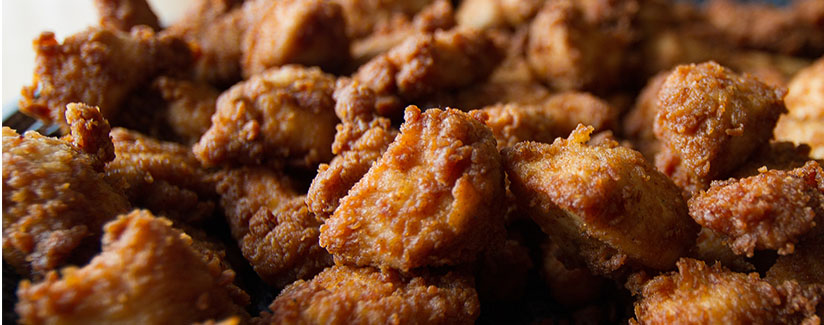
“Pink Slime” in Chicken Nuggets?
Many of you have seen it: the so-called “pink slime” video where food celebrity Jamie Oliver seeks to demonstrate to children how chicken nuggets are made. If you haven’t seen it, check it out below:
After an inquiry regarding “pink slime” or mechanically separated chicken in chicken nuggets, we asked Dr. Casey Owens, Associate Professor in the Department of Food Science and member of the Center of Excellence for Poultry Science at the University of Arkansas for some clarification. She maintains that this is not the process used to make nuggets.
We received a question from a reader who wants to know what food products come from “mechanically separated chicken.” What can you tell us about this?
Dr. Owens:
Typically, mechanically separated chicken serves as an ingredent for products like hot dogs, bologna, and Vienna sausages – emulsified products. The processor he uses in the video is not what would be used in the industry, nor would this process be used for chicken nuggets as the video suggests.
Why is mechanically separated chicken used?
Dr. Owens:
Mechanically separated chicken (MSC) contains proteins that are useful for other products. It takes on a fine, pasty texture, so it can be formed into a desirable shape. Consumers should note that products using MSC typically have a higher fat content.
In this video, the people say that the pink in the meat is from blood, that eyeballs are mixed into the paste, etc. What is the truth?
Dr. Owens:
First and foremost – there is NO chance of eyeballs being in the chicken, because the head is removed much earlier in the process. In the Jamie Oliver video, you can see there is no head on the chicken he presents to the children – the same is true in processing facilities. Mechanically separated chicken is made using the meat left after the breast meat and legs are removed – meat found between the ribs, near vertebrae, around joints, etc. as well as some fat, connective tissue and skin (if there is any that remains on the carcass). There will also be trace amounts of bone, which provide calcium – but bone content is monitored closely as only so much calcium is allowed in MSC. Lastly, some of the meat will appear darker in color becasue it either came from legs (dark meat) or is bone marrow (if bones are broken in the process, some marrow can come out).
Take a look at the picture below. The video says this is mechanically separated chicken. What’s your take?
Dr. Owens:
Well, it would be great to know the source of that image, because without it, anyone can claim it is anything. If it is any type of meat, I would guess that it is a hot dog batter – not chicken – because of the coloring. When a meat emulsion is made (ie., hot dog, bologna), it becomes lighter in color because of the stable mixture between fat and water that is formed. Kind of similar to the reason mayonnaise is white. Because poultry meat is relatively light anyway, color (e.g., paprika) can be added. The nitrites generally found in cured products (i.e., hot dogs) also create a color reaction in the meat, causing it to have a reddish/pinkish color in meat.

Do you eat meat that has gone through mechanical separation?
Dr. Owens:
Yes – in fact, I happen to like hot dogs!
If consumers don’t want to eat MSC, how can they avoid it?
Dr. Owens:
If MSC (or MST – mechanically separated turkey) is used in a product, it has to be listed on the ingredient statement as “mechanically separated chicken” (or other species). It would not be listed as just “chicken.” Overall, I encourage people to read their ingredient statements before coming to any conclusions. If they are not satisfied with those ingredients, they can choose another product.
How about you… do you eat products like hot dogs and bologna that have been emulsified? Tell us in the comments section below.
“Fast Food Chicken Nuggets” by Walt Stoneburner is licensed under CC BY.


























